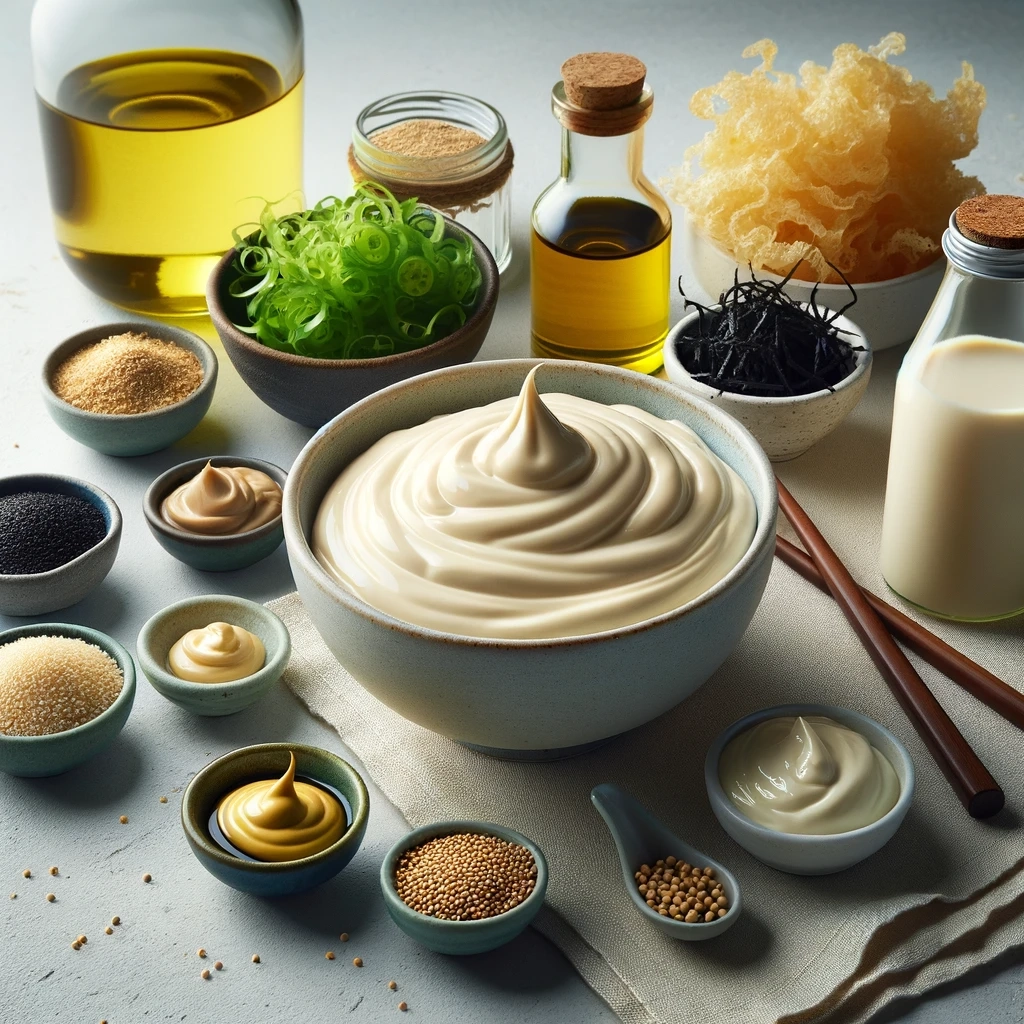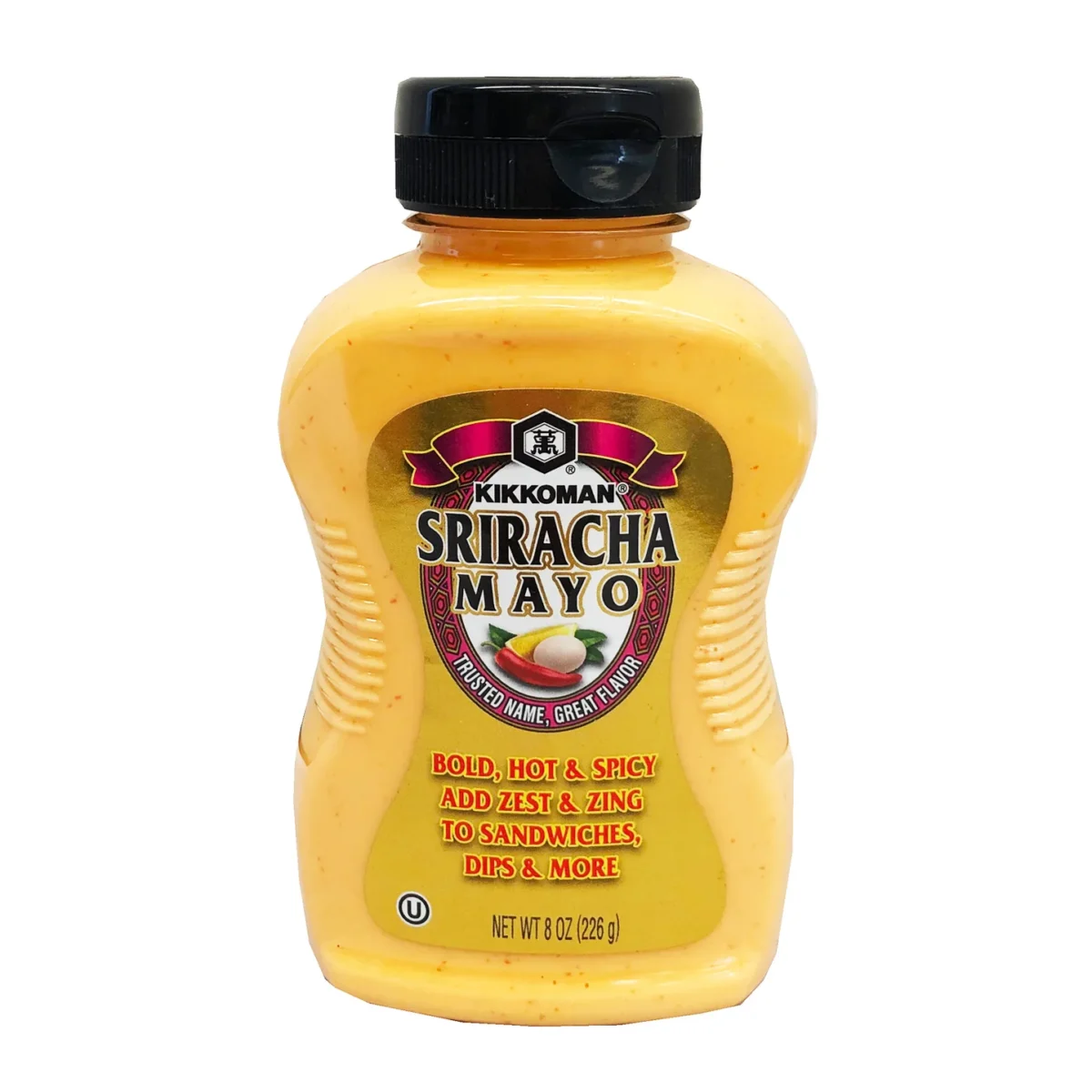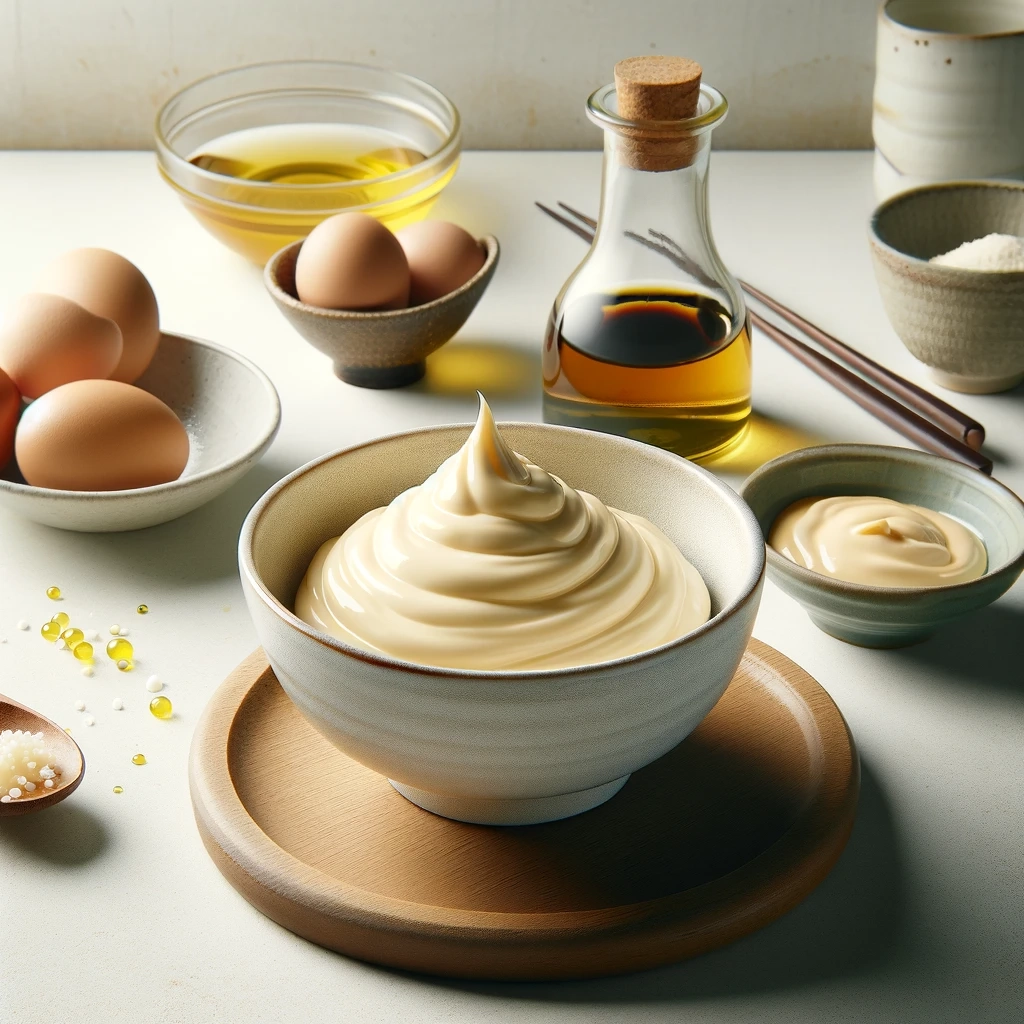Japanese mayo has become a rising star in the condiment world. This tangy, creamy sauce can liven up everything from sushi rolls to potato salads. But what exactly makes Japanese mayo different from regular mayo? In this article, we’ll explore the history, uses, and best recipes for Japanese mayo.
Japanese Mayo: What is it?
Japanese mayo has a distinct sweet and tangy flavor thanks to key ingredients like rice vinegar, soy sauce, and MSG. The most famous brand is Kewpie mayo. It has a pale yellow color from an abundance of egg yolks, and a thick, custard-like texture.
The origins of Japanese mayo can be traced back to 1925 with the founding of the Kewpie Corporation. Inspired by American salad creams, Kewpie founder Toichiro Nakashima created an aioli-style mayonnaise tailored to Japanese tastes. It contained more egg for richness, rice vinegar for mild tang, and umami flavors like MSG. The mayo was named after the kewpie doll logo and soon became popular nationwide.
Today, Kewpie remains the top selling mayo in Japan, with its signature squeeze bottle and rich egg yolk base. Companies like Kikkoman have also introduced their own Japanese-style mayo products to meet growing demand globally.
Compared to regular mayo, Japanese mayo is less sour and has a subtle umami taste. This versatile condiment adds flavor to everything from sushi to sandwiches. It’s also commonly used in Japanese potato salad and on takoyaki octopus balls.
Japanese Mayo vs. Regular Mayo
While both are emulsified sauces made with egg yolks, oil, and an acid like vinegar, Japanese mayo and regular American mayo have some key differences. Japanese mayo uses rice vinegar for a mellow tang and also contains soy sauce and MSG. It’s thicker due to more egg yolks, while regular mayo has more vinegar for a pronounced sour taste.
The ingredients also set the two apart. Japanese mayo is made with rice vinegar, soy sauce, egg yolks, vegetable oil, and MSG. Regular mayo contains more neutral vinegars like distilled or cider vinegar, along with egg yolks, oil, lemon juice or mustard for flavor. The textures vary too, with Japanese style being rich and creamy compared to American mayo’s thicker, stiff peaks.
Homemade Japanese Mayo

Making homemade Japanese mayo allows you to tweak flavors to your taste. To make it authentic, you’ll need:
- 3 egg yolks
- 2 teaspoons rice vinegar
- 1 cup vegetable oil
- 1 teaspoon soy sauce
- 1/4 teaspoon MSG
Instructions:
- In a bowl, whisk together the egg yolks and rice vinegar until smooth.
- Slowly drizzle in the vegetable oil while whisking constantly to emulsify.
- Once the mayo has thickened, whisk in the soy sauce and MSG.
- Taste and adjust ingredients as needed. Add more vinegar for tang or oil to adjust texture.
- Store refrigerated in an airtight container up to 2 months.
You can also substitute gluten-free tamari for the soy sauce or leave out MSG. Try adding sesame oil, sriracha, or ginger for extra flavor.
Vegan Japanese Mayo

For a plant-based take, try vegan Japanese mayo. Substitute the egg yolks with soy milk or aquafaba for a creamy base. Keep the rice vinegar for tang and umami flavors like soy sauce, sesame oil, seaweed, miso paste, or Shiitake mushrooms.
Blend 3/4 cup soy milk, 1 tablespoon rice vinegar, 1 teaspoon Dijon mustard, 1/2 cup vegetable oil, 1 teaspoon soy sauce, 1/2 teaspoon sesame oil, and a pinch of seaweed powder. This makes a vegan Japanese mayo with the characteristic rich, eggy taste.
Kikkoman Japanese Mayo

When it comes to pre-made products, Kikkoman Japanese mayo is the most popular brand. Made by the famous soy sauce company, it contains egg yolks, soybean oil, rice vinegar, and natural flavors. Kikkoman mayo has an iconic rich, yellow color and creamy umami taste perfect for sushi and dipping sauces.
Other widely available Japanese mayo brands to look for include:
- Kewpie – The original thick, custard-like mayo
- Ajinomoto – MSG-free option
- Kenko – Organic certified ingredients
Japanese Mayo Recipes
From salads to seafood, try these 15 tasty ways to use Japanese mayo:
- Kewpie Mayo Musubi – Spread on spam musubi rice cakes
- Japanese Potato Salad – Toss cubed potatoes with kewpie mayo, soy sauce and onions
- Shrimp Avocado Salad – Mix mayo with shrimp, avocado, cucumber
- Crab Salad Stuffed Tomatoes – Fill tomato halves with crab and mayo mixture
- Tuna Poke Bowl – Drizzle spicy tuna poke over rice with kewpie
- Yuzu Scallop Pasta – Toss mayo with scallops, pasta, and yuzu juice
- Tonkatsu Sauce – Blend mayo, ketchup, worcestershire, soy sauce
- California Rolls – Spread mayo when rolling sushi instead of rice
- Chicken Katsu – Use as coating for fried chicken cutlets
- Teriyaki Salmon – Glaze grilled salmon with mayo, soy sauce, spices
- Yakuza Wings – Fry chicken wings coated in mayo, sriracha, and panko
- Tempura Dipping Sauce – Mix mayo with dashi, soy sauce, and lemon
- Miso Mayo Dressing – Whisk with white miso paste for salad dressing
- Burger Sauce – Combine mayo, ketchup, mustard, relish as spread
- Seaweed Salad – Toss wakame seaweed with kewpie mayo
With its versatile flavor, Japanese mayo can add a creamy kick to all kinds of dishes beyond sushi rolls. Get creative with new ways to incorporate this umami-packed condiment into your cooking.
Where to Buy Japanese Mayo
Check your local Asian supermarket or the international food aisle at well-stocked grocers for brands like Kewpie and Kikkoman. You can also find Japanese mayo online from retailers like Amazon, Yamibuy, and Walmart if specialty stores aren’t available in your area.
When buying, look for key traits that indicate authentic Japanese mayo:
- Rich yellow color from lots of egg yolk
- Thick, creamy custard-like texture
- Ingredients like rice vinegar, soy sauce, MSG
- Smooth, non-grainy consistency
- Balance of umami, salty, sweet, sour flavors
Japanese Mayo Storage Tips
Like regular mayo, store Japanese mayo in the refrigerator after opening. It will generally stay fresh for 2-3 months past the printed expiration date. Look for these signs it has gone bad before using:
- Sour or off smell
- Curdled, watery, or separated texture
- Discoloration
- Mold presence
If you see any of these, throw the mayo out. For optimal freshness, store in a tightly sealed container towards the back of the fridge.
Nutrition Benefits of Japanese Mayo
Thanks to all those egg yolks, Japanese mayo delivers some solid nutritional value. The eggs provide protein, healthy fats, and antioxidants like lutein and zeaxanthin for eye health. The oils also contain anti-inflammatory omega-3s. And the rice vinegar offers a probiotic boost.
In moderation, this condiment can be part of a balanced diet. Just watch your overall fat, sodium, and cholesterol intake as you would with regular mayonnaise.
Conclusion
Whip up some Japanese mayo at home or pick up a top brand like Kewpie. With its signature rich, tangy flavor, this condiment is sure to become your new secret ingredient. Use it to make authentic Japanese dishes or add a creamy umami kick to everyday meals. Thanks to its bold egg flavor, velvety texture, and versatile uses, Japanese mayo has earned its place in condiment fame.




